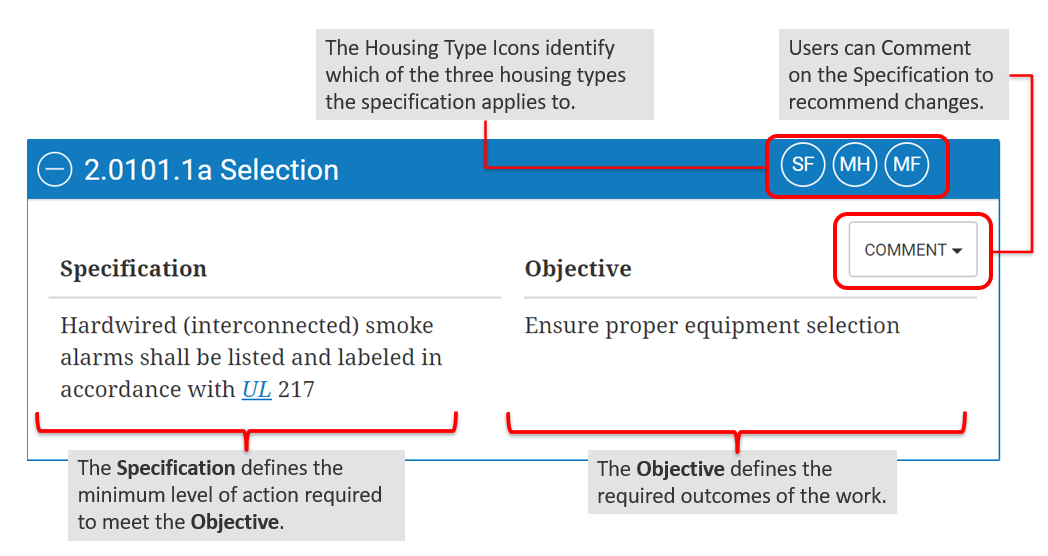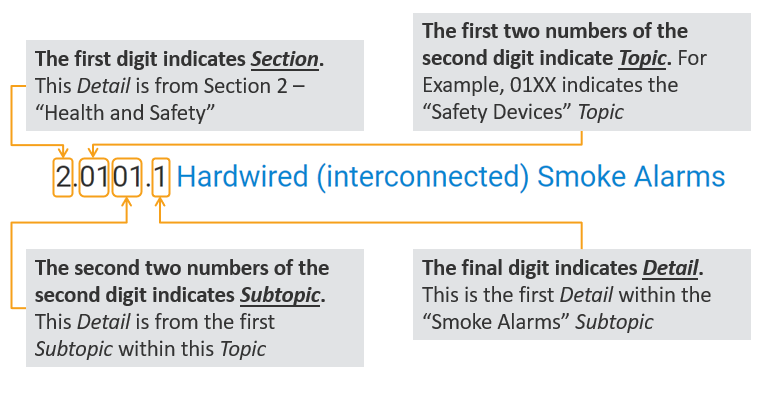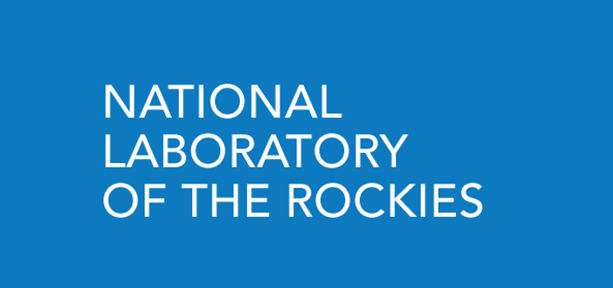The Standard Work Specifications (SWS) synthesize more than 40 years of building science expertise within the U.S. Department of Energy (DOE) Weatherization Assistance Program ( WAP ) and the greater industry by identifying the desired outcomes of the individual measures performed during a whole-house energy upgrade. They combine original content with references to relevant codes and/or technical standards that currently exist as independent, stand-alone documents. You can find the following information on this page below:
- Significance of the whole-house assessment
- Specification example
- Numbering scheme
- Codes and standards
- Healthy Indoor Environment Protocols
Significance of the Whole-House Assessment
The home assessment/energy audit is a vital component of the home energy retrofit process. It is imperative that a qualified auditor perform a home assessment by following a high-quality audit procedure recognized by the WAP or another program sponsor. Once the auditor has conducted a whole-house assessment and developed a list of recommended measures, the SWS can be used to identify the desired outcomes of those measures and to assess the quality of the completed work.
Specification Example: How the SWS Are Displayed
The SWS identify and define the desired outcome(s) of a particular energy efficiency measure, stated as objectives, and then list the minimum specifications needed to meet those outcomes, as shown below in the example below.

Numbering Scheme
The SWS are organized into four layers, reflecting how an individual may approach a whole-house assessment or audit. From general to specific, the layers are ordered by section, topic, subtopic, and detail, as shown in the graphic below. Each section contains multiple topics and each topic is further divided into subtopics and details. The same numbering system utilized in the printed document is also included in this online tool, as a quick way to find specific information.

The Role of Codes and Standards in the SWS
While the SWS will help identify the desired outcomes of energy efficiency measures in a weatherization or home energy upgrade project, they are not a replacement for the codes and/or technical standards mandated by a particular jurisdiction. State, local, or municipal code or ordinance has legal precedence and users should obtain copies of the applicable codes and standards for their jurisdiction before performing the work. (Please note: References to codes/standards in the SWS do not constitute an endorsement.)
Numerous national standards bodies have provided significant insight and input into the SWS. The 2012 International Residential Code ( IRC ) for One- and Two-Family Dwellings serves as the primary referenced standard. In order to limit redundancy, standards that are already referenced within the IRC are not restated within the SWS. However, when a standard is not addressed by the IRC , it is referenced within the Referenced Standards as an additional resource.
The Role of the EPA Healthy Indoor Environment Protocols for Home Energy Upgrades in the SWS
The SWS and the U.S. Environmental Protection Agency’s ( EPA ) Healthy Indoor Environment Protocols for Home Energy Upgrades were developed in conjunction with one another and are intended for voluntary adoption by weatherization assistance programs, federally funded housing programs, private sector home performance contractors, and others working in the residential energy upgrade industry.
Together, the complementary documents provide a robust and practical set of resources for home energy upgrade contractors, trainers, and program administrators; help improve the quality of the work performed in this expanding industry; promote occupant health and safety; and will assure consumers that high quality work is performed. Read more about the Healthy Indoor Environment Protocols for Home Energy Upgrades on the EPA’s website.
